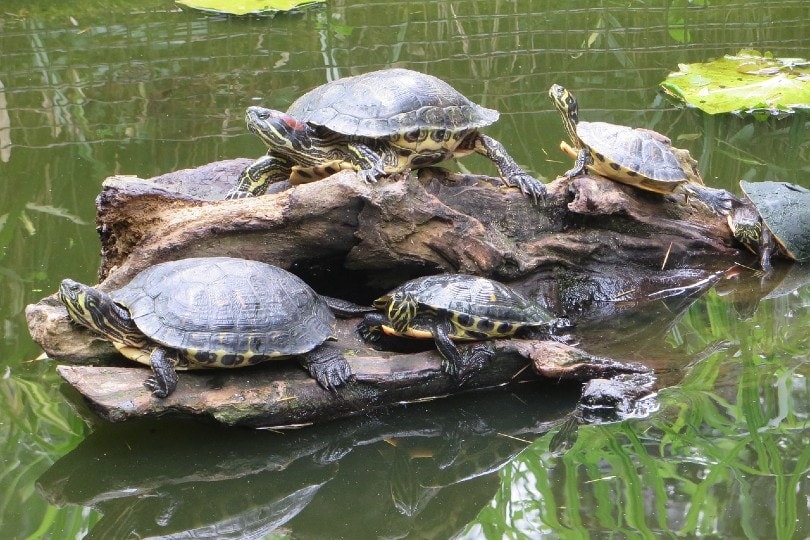Consider yourself a lucky person if you have your own pond and even luckier if you’ve decided to add turtles to your pond alongside the variety of species that call it home. Turtles, not to be confused with tortoises, are typically aquatic. They spend most of their time in the water but also spend time basking on rocks in the sun.
The kind of turtle that you should include as a part of your tiny ecosystem must thrive in the climate of your location. You’ll also need to ensure that your pond is big enough for your turtles and any other species that you’ve included. For the most part, focus on bringing turtles that are native to your area into your pond. For that reason, we’re only focusing on pond turtles that are indigenous to North America.

The 8 Types of Pond Turtles
1. Common Map Turtle

These turtles got their name from the map-like pattern on their shells. They are from southeastern Canada and across the central U.S. (as well as Maryland, New Jersey, and Pennsylvania).
They can be found in slow-moving fresh water in lakes, rivers, creeks, and ponds.
The females can grow 6–10 inches, whereas the males are only about half that size. The water should be about 72°F–80°F and must be high-quality because these turtles are prone to shell rot and infections. They also need moving water, so your pond should have a fountain or pump.
2. Eastern Musk Turtle
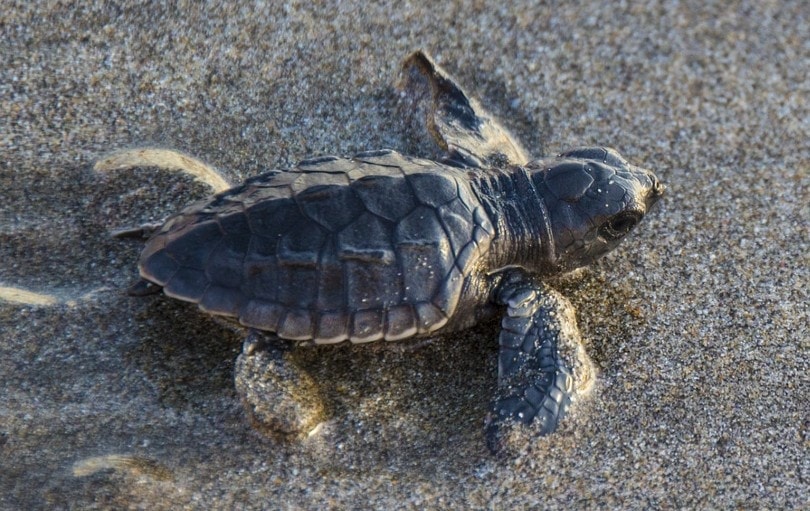
Also referred to as Stinkpot turtles, these reptiles are not called “musk” just for fun. When stressed and to protect themselves against predators, they can smell musky or skunk-like.
The Eastern Musk are aquatic and spend most of their time in the water, including rivers, marshes, shallow lakes, and ponds.
They live in southeastern Canada and much of the eastern U.S. Their shell is dome-shaped, and they tend to be 2–5 inches. Water temperature should be 75°F–84°F, and they need several surfaces to rest on. They tend to walk a fair bit on the bottom, so don’t panic if you can’t find your Stinkpot—they might just be on the bottom of your pond.
3. False Map Turtle
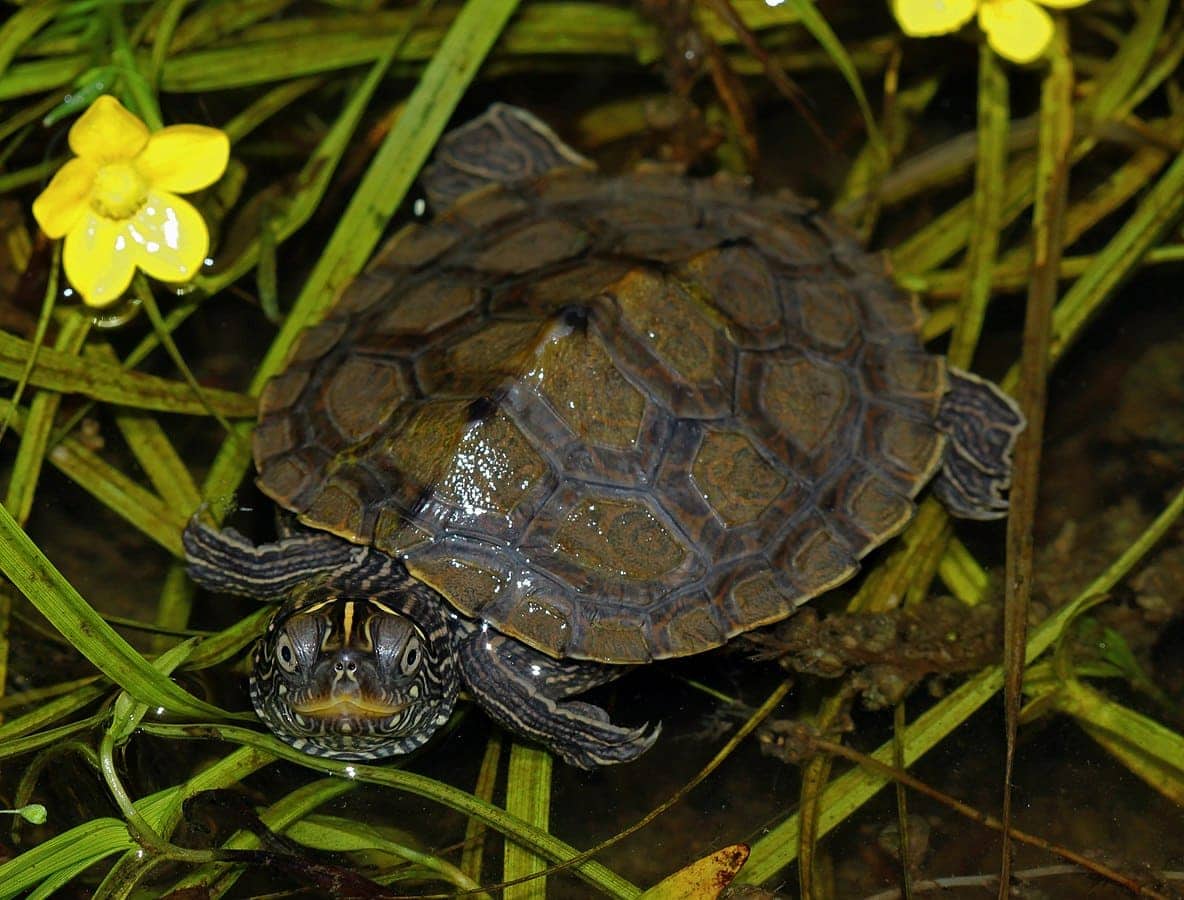
The False Map Turtle hails from the Missouri and Mississippi river systems and grows 6–10 ½ inches. They are also known as Sawback Turtles due to the ridges on their shells, and like the Common Map Turtles, they have yellow markings on their shells that resemble the lines of a map.
They are generally docile turtles and can live alongside various other pond turtles. They also enjoy basking, so ensure that you have basking rocks and logs set up for them.
These turtles prefer moving water, so you will need a fast-moving pump. The water temperature of your pond should be in the mid-70s.
4. Painted Turtle
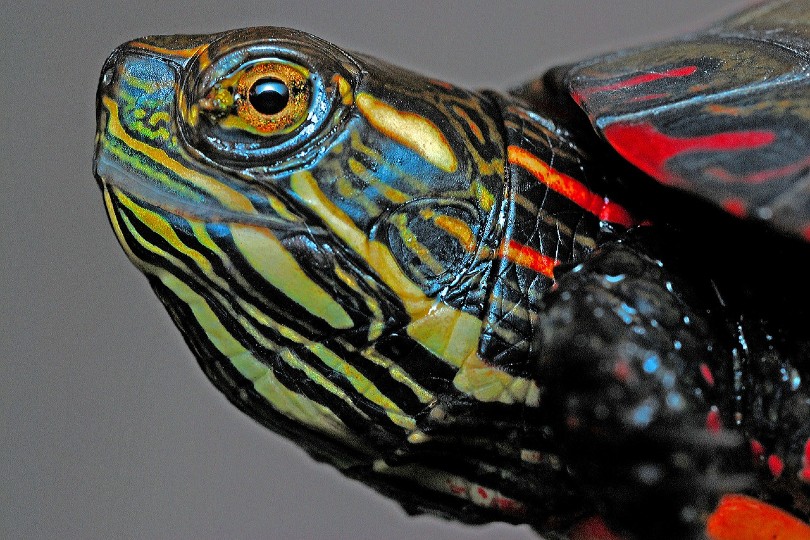
Painted turtles are among the most common species in North America, and they range from northern Mexico up to southern Canada. They live in shallow and slow-moving freshwater in marshes, swamps, streams, rivers, lakes, and ponds.
The Painted Turtle got its name from its ornate shell markings and can grow 4–8 inches. They don’t do well with handling, so they are primarily hands-off pets.
The water temperature of your pond should be maintained at about 75°F–80°F, and they need slow-moving water. Like all turtles, they’ll also require an area for basking.
5. Red-Eared Slider
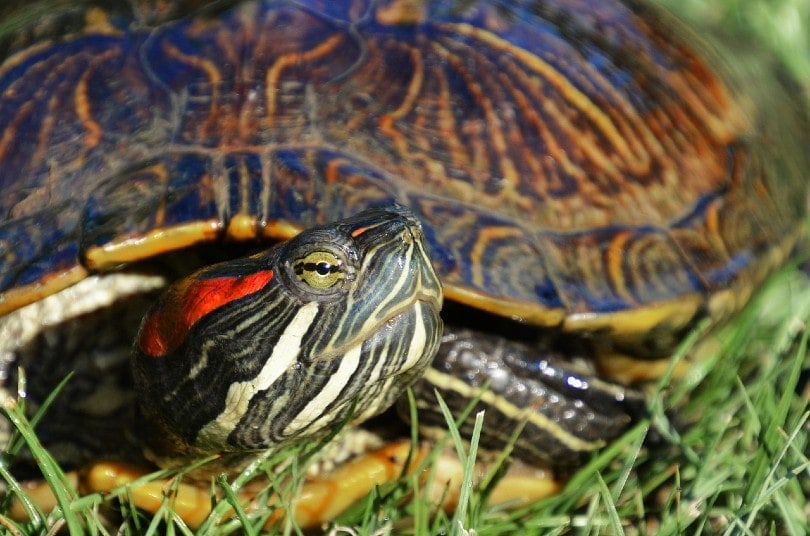
The Red-Eared Slider is a popular pet turtle that is native to northern Mexico and the southern United States. Unfortunately, they’ve also become an invasive species because of their popularity and people releasing their pet turtles in areas where they do not belong.
These turtles are recognizable by the red marks behind their eyes, and they can grow 5–11 inches. Like many pond turtles, they prefer slow-moving water in marshes, lakes, and ponds.
The pond water temperature should be about 75°F–86°F, and you should ensure that there is slow-moving water for your turtle
Related Read: 8 Best Tank Mates for Red-Eared Slider Turtles
6. River Cooter
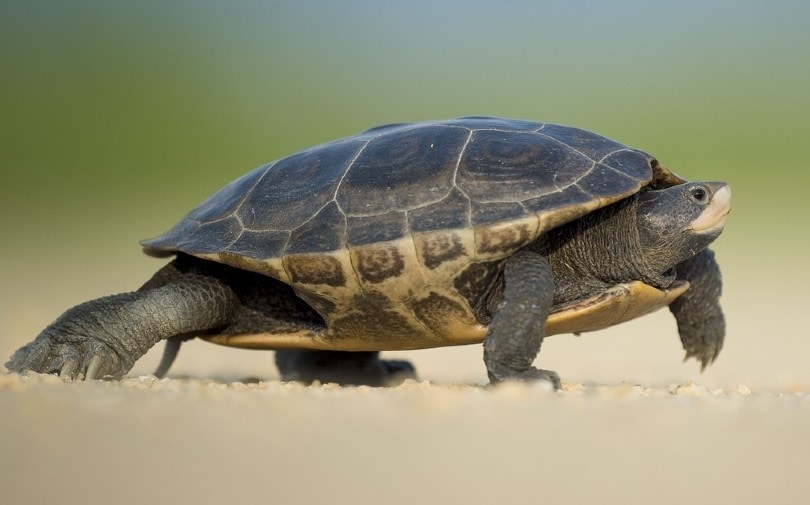
The River Cooter comes from the eastern and central United States and lives in both brackish and freshwater locations. Typically, they prefer lakes, rivers, ponds, and tidal marshes with a large amount of vegetation. They love a good basking session and will sleep in the water. They are strong swimmers due in part to living in fast-moving rivers at times.
They are large, friendly turtles that grow 10–14 inches and have dark greenish-brown shells. The pond’s water temperature should sit around 75°F, and since they are larger than some others on this list, you need to be sure your pond is large enough for them. Water depth should be about 1–2 feet deep.
7. Snapping Turtle

Snapping turtles aren’t the best for your pond because they can grow quite large and tend to be a little scary. It isn’t an exaggeration to say that they can take a person’s finger off with their powerful jaws. They live primarily in southern Ontario but are also found in parts of the Maritimes, Saskatchewan, and Alberta, as well as areas in the United States east of the Rockies.
They can be as large as 8–14 inches, but we’re not necessarily recommending these turtles for your pond. They are likely to eat any fish that you have, so it’s best to relocate them safely (for both you and the Snapper).
8. Yellow-Bellied Slider
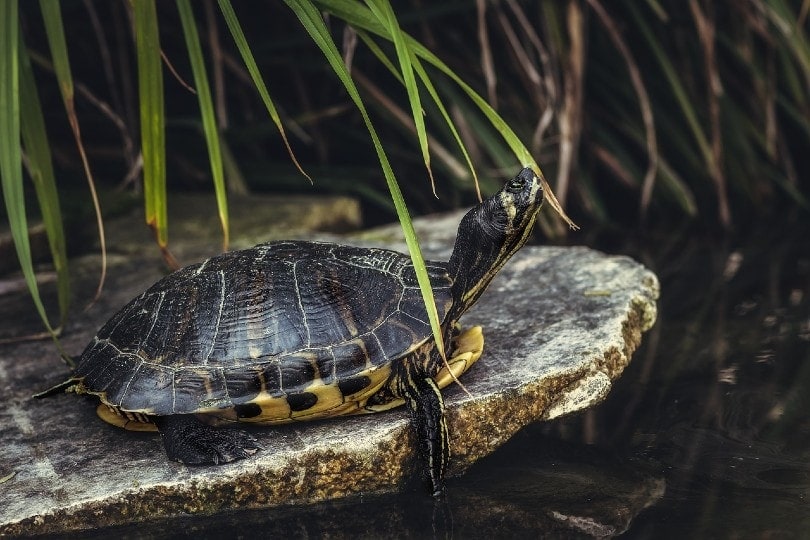
The Yellow-Bellied Slider is typically found in the southeastern U.S., from southeastern Virginia to Florida. They are popular pets and are found in slow-moving water such as wetlands, marshes, swamps, rivers, and ponds. They are 5–13 inches and are patterned in black and yellow. Sliders are active, inquisitive, and bold and will spend their time swimming, basking, and sliding into the water.
Your pond’s water temperature should be 75°F–80°F, so you’ll probably need a heater.

Considerations for Your Pond
If you’re planning on bringing turtles into your pond, you will need to ensure that it is fenced off. This will help protect your turtles from predators and prevent your pets from wandering off. This is for their own safety, but we also want to prevent turtles that don’t belong in your local ecosystem from becoming invasive species.
Be sure to do your research on the turtle species that you’re interested in, and make sure they will be comfortable in your pond and in your climate.
- You might also be interested in: 6 DIY Outdoor Turtle Ponds You Can Build Today

Final Thoughts
There are many more pond turtles than what is listed here, but we wanted to stick with North American aquatic turtles. If your pond is outdoors, you’ll want to aim for turtles that reside in the wild in your neck of the woods. That way, you know that they can handle the variety of temperatures while living in your pond.
We hope that you find the right turtle (or turtles) for your pond and that you enjoy them for many years to come. Most of these turtles live a long time, so be prepared to look after them (and be entertained by them) for years.
See Also:
- 4 Rare Pet Turtles: Most Unusual Species (With Pictures)
- 6 DIY Turtle Pond Plans You Can Make Today (With Pictures)
Featured Image Credit: DEZALB, Pixabay
